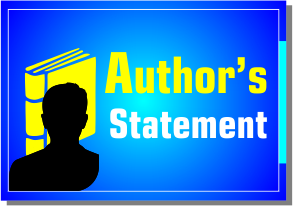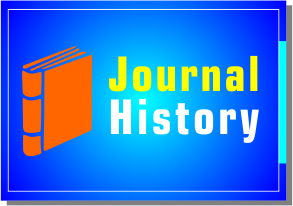Analisis Penyerapan Anggaran Pemeliharaan Jalan Pasca Penerapan Kebijakan Earmarking Tax Atas Pajak Kendaraan Bermotor di Provinsi Banten.
DOI:
https://doi.org/10.31334/transparansi.v6i2.3331Keywords:
Budget Absorption, Road Maintenance, Earmarking Tax, Motor Vehicle Tax,Abstract
Regional governments have an important role in the development of their own regions and must have the ability to increase revenue and optimize the effectiveness and efficiency of budget use in order to improve public services to the community. Budget performance can be measured through the level of budget absorption. In increasing accountability for the use of budget revenues, the Banten provincial government issued Regional Regulation No. 1 of 2011 concerning Regional Taxes with reference to Law No. 28 of 2009 which includes the concept of earmarking tax. The regulation states that 10% of motorized vehicle tax is allocated for the construction, maintenance of roads and public transportation. The purpose of implementing this earmarking tax is to gradually and continuously improve the quality of service and create good governance and clean government. This research method uses a qualitative research method with a descriptive approach. The results of this research are road maintenance with a minimum of 10% of the profit sharing of motorized vehicle tax in Banten province which has exceeded the predetermined minimum limit and has been absorbed. Total earmarking funds reached 50.01% of road maintenance costs and road maintenance expenditures reached 19.99% of total Motor Vehicle Tax revenues which were shared into the Banten Province treasury.References
Arikunto, S. (2019). Prosedur penelitian : suatu pendekatan praktik. Jakarta : Rineka Cipta.
Badan Kebijakan Fiskal. (2013). https://fiskal.kemenkeu.go.id/kajian/2013/10/28/104645787550783-kajian-kelayakan-penerapan-earmarking-tax-di-indonesia
Badrudin, R. (2017). Ekonomika otonomi daerah (Edisi 2). Yogyakarta : UPP STIM YKPN.
Buchanan, J. M. (1963). The economics of earmarked taxes. Journal of Political Economy, 71 (5), 457–469. https://doi.org/doi:10.1086/258794
Djafar, S. muhmmad. (2018). Pembaharuan Hukum Pajak (Edisi Revi). Depok : PT RajaGrafindo Persada, 2018.
IBFD International Tax Glossary (7th Editio). (2015).
Khusaini, M. (2018). Keuangan Daerah (Malang). UB Press.
LKIP Dinas PUPR Povinsi Banten. (2021).
LRA TA.2021. (n.d.).
McCleary, W. (1991). The Earmarking of Government Revenue: A Review of Some World Bank Experience. The World Bank Research Observer, 16.
Murdiyanto, E. (2020). PENELITIAN KUALITATIF (Edisi 1). Lembaga Penelitian dan Pengabdian Pada Masyarakat UPN â€Veteran†Yogyakarta Press.
Pohan, C. A. (2021). Kebijakan dan Administrasi Perpajakan Daerah di Indonesia (Jakarta). PT Gramedia Pustaka Utama.
Rahmawati, R., & Jouzar Farouq Ishak. (2020). Analisis Faktor – Faktor Yang Mempengaruhi Penyerapan Anggaran Belanja Pada Pemerintah Kota Cimahi. Indonesian Accounting Research Journal, 1(1), 180–189.
Ranjit S. Teja. (2015). Papers and Comments The Case for Earmarked Taxes. 35(3), 523–533.
Sugiyono. (2021). Metode Penelitian Kuantitatif Kualitatif dan R&D. CV Alfabeta.
Perundang-Undangan
Undang-Undang Republik Indonesia Nomor 28 Tahun 2009 Tentang Pajak Daerah dan Retribusi Daerah. 2009. Jakarta
Undang-Undang Republik Indonesia Nomor 23 Tahun 2014 Tentang Pemerintahan Daerah. 2014. Jakarta
Peraturan Daerah (PERDA) Provinsi Banten Nomor 1 Tahun 2011 Tentang Pajak Daerah. 2011. Serang
Downloads
Published
Issue
Section
License

This work is licensed under a Creative Commons Attribution-ShareAlike 4.0 International License
Please find the rights and licenses in Transparansi : Jurnal Ilmiah Ilmu Administrasi By submitting the article/manuscript of the article, the author(s) agree with this policy. No specific document sign-off is required.
- License
The commercial use of the article will be governed by the Creative Commons Attribution license as currently displayed on Creative Commons Attribution-ShareAlike 4.0 International License.
2. Author(s)' Warranties
The author warrants that the article is original, written by stated author(s), has not been published before, contains no unlawful statements, does not infringe the rights of others, is subject to copyright that is vested exclusively in the author and free of any third party rights, and that any necessary written permissions to quote from other sources have been obtained by the author(s).
3. User Rights
Transparansi : Jurnal Ilmiah Ilmu Administrasi spirit is to disseminate articles published are as free as possible. Under the Creative Commons license, Transparansi : Jurnal Ilmiah Ilmu Administrasi permits users to copy, distribute, display, and perform the work for non-commercial purposes only. Users will also need to attribute authors and Transparansi : Jurnal Ilmiah Ilmu Administrasi on distributing works in the journal and other media of publications.
4. Co-Authorship
If the article was jointly prepared by more than one author, any authors submitting the manuscript warrants that he/she has been authorized by all co-authors to be agreed on this copyright and license notice (agreement) on their behalf, and agrees to inform his/her co-authors of the terms of this policy. Transparansi : Jurnal Ilmiah Ilmu Administrasi will not be held liable for anything that may arise due to the author(s) internal dispute. Transparansi : Jurnal Ilmiah Ilmu Administrasi will only communicate with the corresponding author.
5. Miscellaneous
Transparansi : Jurnal Ilmiah Ilmu Administrasi will publish the article (or have it published) in the journal if the article’s editorial process is successfully completed. Transparansi : Jurnal Ilmiah Ilmu Administrasi editors may modify the article to a style of punctuation, spelling, capitalization, referencing and usage that deems appropriate. The author acknowledges that the article may be published so that it will be publicly accessible and such access will be free of charge for the readers as mentioned in point 3.
Every accepted manuscript should be accompanied by "Copyright Transfer Agreement"prior to the article publication.











